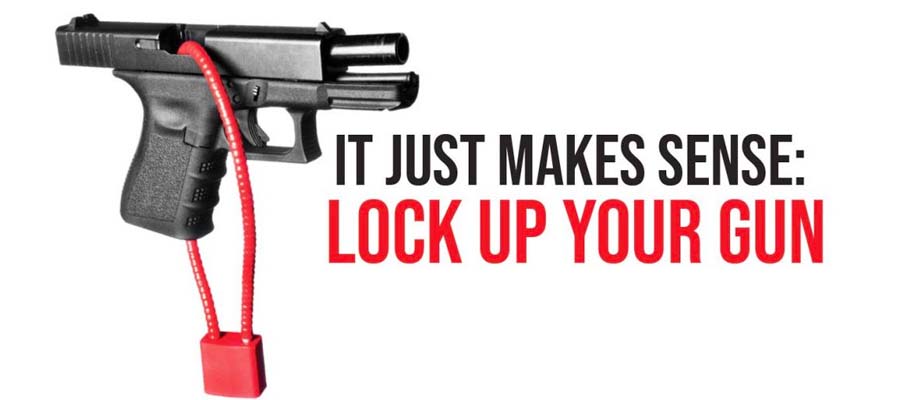March E-Newsletter – March is Teen Violence Prevention Month at Teen Health Connection

Topic: Firearm Awareness & Safety in the Home
March is Teen Violence Prevention Month at Teen Health Connection. Recent mortality data from the Centers for Disease Control indicate over 45,000 firearm-related deaths in the United States in 2020. For the first time, firearm-related injuries surpassed motor vehicle crashes as the leading cause of death for children and adolescents. From 2019 to 2020, the relative increase in the rate of firearm-related deaths of all types (suicide, homicide, unintentional, and undetermined) among children and adolescents was 29.5% — more than two times as high as the relative increase in the general population.
The simplest way to keep adolescents safe from firearms is to keep them out of the home. The American Academy of Pediatrics (AAP) advises that the safest home for a child is one without firearms. Adolescents are at an increased risk for suicide when there is a firearm in the home. Suicide rates for this population are four times higher than for kids who live in homes without guns. In the past decade, 40% of the suicides committed by kids and teens involved firearms. Nine out of 10 of these suicides were with firearms that the victims accessed at their own homes or from a relative’s home.
In this month’s e-newsletter, Teen Health Connection Psychologist Katrina DeDona, PsyD, discusses the importance of firearm safety for adolescents and steps parents can take to create safer environments for their teens – even when they’re away from home.
What precautions should parents take should they choose to keep a firearm in their home?
An estimated 4.6 million kids live in a home with a firearm that is unlocked [HealthyChildren.org] Kids are naturally curious; they likely know where your firearm is stored. The safest route a parent can take is to not have a firearm in their home. With that said, a large portion of the population in the U.S. own firearms, so the goal is to focus on harm reduction. Owning firearms can be part of an individual’s identity, or used for personal protection, hunting, or collecting purposes. Regardless of the reasons behind firearm ownership, we can all stand behind reducing the number of injuries and deaths caused by firearms. If you are part of the population who own firearms, secure and safe storage is critical to harm reduction. This includes keeping all firearms and ammunition out of reach of children and untrained adults in the home, taking firearms safety courses, and keeping your firearms in a safe that cannot be easily compromised. If a safe is easily accessible or in a case they can carry, youth will find a way to access it. If a safe is not accessible or feasible for you, at a minimum, applying a cable or trigger lock can help lower the risk. Remember to securely store ammunition in a separate location. When stored, make sure your firearm is unloaded, and as an added layer of protection leave any safety mechanism on when stored. If you are taking your firearm out, make sure it is in immediate possession and control. Teens and kids are quick and can grab your firearm before you know it. Never leave your firearm in your car. In North Carolina, 311 firearms were stolen from vehicles in 2021 alone. These are just some of the ways responsible firearm owners can reduce the number of accidental deaths and injuries related to firearms.
If you’re unsure of where to purchase or find these types of devices, ask your retailer. Federal law requires that firearm safety and locking devices to be available where firearms are sold.
What’s the best way parents can start that sometimes uncomfortable conversation with friends and loved ones who own guns about safe storage when their teen is present?
This has been a new area of conversation and is a touchy topic. Conversations around firearms can become politically charged with ideas on both sides. Think of it this way: If your child was going over to a friend or family member’s house and they had a peanut allergy, you would let them know and make sure there was no access to peanuts. Access to peanuts for a child with an allergy can be life threatening, just like with firearms. A way to start that conversation could be, “Hey! Tommy is excited to come over today, just by chance do you own firearms and if so, how are they stored?” If they do and they’re not locked up, it doesn’t have to become a hostile situation. Instead, you could offer a compromise like having the get together at your house instead. Research has shown that this conversation is often not a big deal. While it may be an uncomfortable conversation to have, more than a third of all unintentional shootings of children take place in the homes of their friends, neighbors, or relatives [HealthyChildren.org]. Making sure that where your child is going is a safe place is part of your job as a parent. The best way to approach this issue is to be direct in the conversation.
Suicide rates are four times higher for kids who live in homes with guns [HealthyChildren.org]. What suggestions do you have for parents of adolescents struggling with their behavioral health and how to keep them safe?
Firearm suicides are the fourth leading cause of death in youth 19 years-of-age and younger [ChildSafetyNetwork.org]. The majority of suicide attempts that involve a firearm end up being lethal because it is such a dangerous method. Signs your child may be struggling with their behavioral health may include appearing more withdrawn, not engaging with peers, struggling academically, and increased worrying. Thoughts of suicide can be among those signs listed above. What should parents do if they are concerned their child may be showing some of these signs? It is okay to have a conversation with your child about what is going on with them mentally and emotionally, and it’s okay to ask if they are having thoughts of hurting themselves. There can be a misconception that if you ask, or they admit to it, that they will be more likely to follow through, which is not the case. If they are struggling, it is important to get them connected to a therapist or counselor to give them space to work through any issues or problems. In terms of immediate safety, if they tell you they are having thoughts or suicide or that they have a plan, you want to remove the means. The safest option then is to transfer the location and possession of that firearm, including storing any firearms at a friend or family member’s house. At a minimum securely storing that firearm would be the next best thing.
If you are concerned, or your child has admitted to having suicidal thoughts please call the Suicide prevention hotline (988), the local behavioral health hotline (704-444-2400), or our triage clinician (704-381-8379) for assistance. Additional resources can be found by visiting https://atriumhealth.org/medical-services/prevention-wellness/behavioral-health/resources.
Sources:
https://www.healthychildren.org/English/safety-prevention/at-home/Pages/Handguns-in-the-Home.aspx
https://www.childrenssafetynetwork.org/infographics/firearm-safetypreventing-death-suicide#:~:text=On%20average%2C%20over%203%2C000%20children,those%20deaths%20are%20by%20suicide.
Goldstick JE, Cunningham RM, Carter PM. Current causes of death in children and adolescents in the United States. NEJM. 2022;386(20):1955–6.


